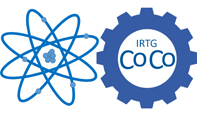05.07.2016 - Kirill Gokhberg - The role of metal ions in X-ray induced photochemistry
| When |
Jul 05, 2016
from 04:00 PM to 05:00 PM |
|---|---|
| Where | HS I, Physik Hochhaus, Hermann-Herder-Str. 3 |
| Add event to calendar |
|
Interaction of highly energetic short-wavelength X-ray photons with matter lies at the heart of numerous experimental techniques aimed at elucidating its structure and electronic properties. Recently new X-ray sources available at modern synchrotron and free electron lasers (FEL) facilities have made it possible to follow the electron dynamics in time or to obtain the structures of biomolecules at unprecedented level of precision. However, the absorption of ionizing X-ray radiation initiates ultrafast electronic decay cascades damaging the molecules; the accumulated damage introduces errors into determined molecular structures or leads to loss of function in biomolecules.
In my talk I will present the results of ab initio modelling of such cascades in rare-gas and microsolvated clusters. Specifically, the non-local electronic decay processes – interatomic Coulombic decay (ICD) and electron transfer mediated decay (ETMD) - will be introduced and their properties discussed. These processes constitute a major part of de-excitation cascades triggered by X-ray absorption in a medium; they represent important mechanisms, whereby energy and charge are redistributed throughout the medium; they are also especially efficient in causing and propagating radiation damage. As a particularly interesting example, it was found that the absorption of X-rays by microsolvated metal ions results in a complicated chain of local and non-local electronic relaxation steps. At the end of this cascade the metal reverts to its original charge state, the immediate environment becomes multiply ionized, and a host of reactive particles is produced in the metal's vicinity. These results obtained in a microsolvated cluster provide a glimpse of how radiation damage is incurred in metal containing biomolecules.
See poster.


